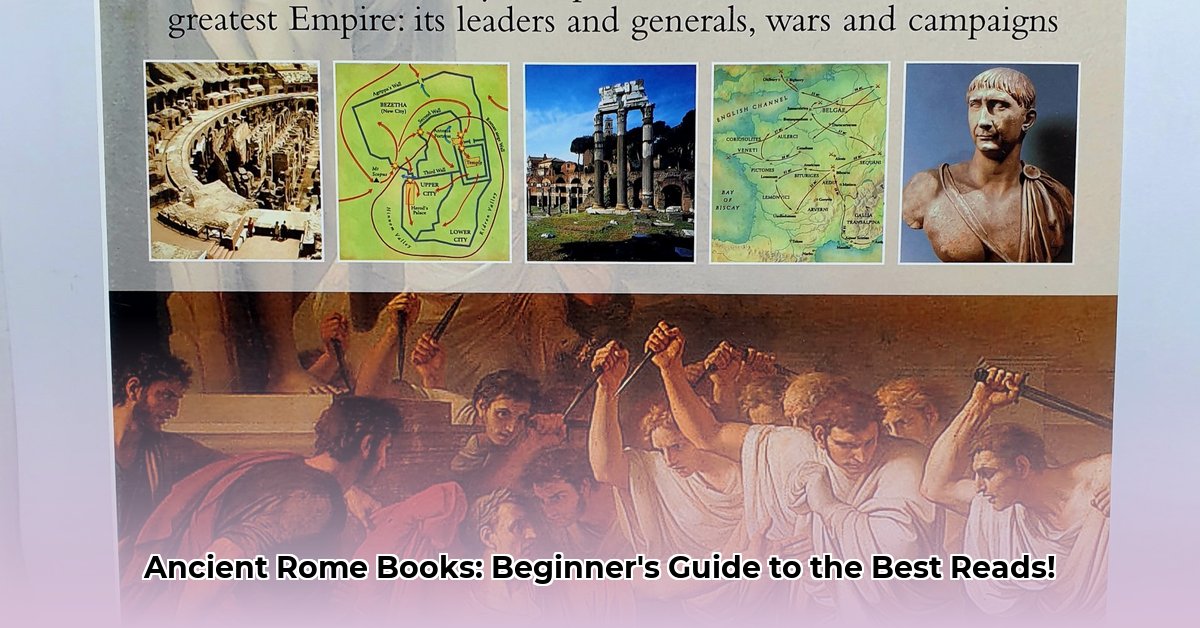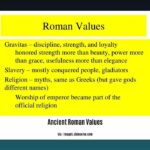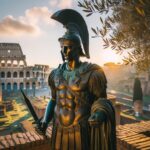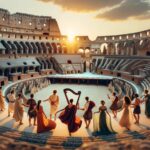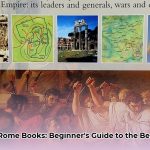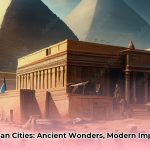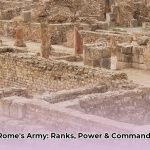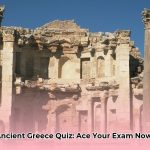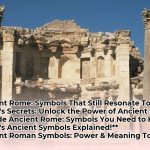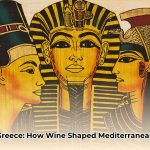Embarking on a journey into the world of Ancient Rome is an immersive experience, akin to unlocking an epic narrative filled with formidable emperors, grand battles, and a rich Roman culture that has profoundly shaped the modern world. For more reading recommendations, see our list of ancient history books. The good news is, a vast library of outstanding ancient Rome books awaits discovery. Yet, with so many excellent options, determining where to begin can be challenging. From foundational overviews to intimate biographies and captivating explorations of daily life, this curated list of essential reads guides you meticulously through this incredible ancient civilization.
Charting the Empire: Foundational Overviews of Roman History
For those just embarking on their exploration of ancient history, a broad overview serves as the perfect initial step. These comprehensive books offer an invaluable foundation for grasping the entire sweep of the Roman Empire.
-
SPQR: A History of Ancient Rome
- By Mary Beard
- This authoritative work provides a comprehensive overview of Roman history, spanning from its mythical origins to the reign of Emperor Caracalla.
- Why Read It: Acclaimed classicist Mary Beard meticulously unpacks traditional narratives, offering a nuanced perspective on Roman history. Her engaging, conversational prose transforms complex scholarship into a highly accessible and thought-provoking journey, making it an ideal entry point that encourages critical analysis of sources and historical interpretation.
-
The Romans
- By Harry Sidebottom
- This concise volume offers a clear and accessible navigation through hundreds of years of Roman history.
- Why Read It: Harry Sidebottom expertly distills centuries of Roman history into a remarkably readable narrative. This work stands out for its straightforward approach, breaking down intricate political shifts and military campaigns into digestible components, making it an indispensable first step for anyone navigating the vast and often complex landscape of classical antiquity.
Epochs and Pivots: Diving into Specific Roman Periods
Once a general grasp of the timeline is established, readers often find themselves drawn to a particular era or a pivotal event that reshaped the Roman Republic or Empire. These specialized books offer focused insights into defining moments and crucial transitions.
-
The War That Made the Roman Empire: Antony, Cleopatra, and Octavian at Actium
- By Barry Strauss
- This work meticulously examines the pivotal civil wars that ultimately transformed the Roman Republic into an Empire.
- Why Read It: Strauss vividly recounts the intense conflict that forged the landscape of imperial Rome, highlighting the profound impact of these transformative periods on its future. It serves as an excellent case study of how specific military and political clashes can decisively dictate the course of an entire civilization.
-
Rubicon: The Last Years of the Roman Republic
- By Tom Holland
- A dramatic and vivid account of the turbulent period leading to the fall of the Roman Republic.
- Why Read It: Tom Holland’s narrative sizzles with political intrigue, personal ambition, and power struggles, making this a gripping and fast-paced read. He paints a compelling picture of a society on the precipice of profound change, demonstrating the intricate complexities of political history and the human drama within it.
The Architects of Power: Key Roman Biographies
Understanding history is often best achieved through scrutinizing the lives of the individuals who shaped it. Biographies are inherently engaging, bringing to life the personalities, struggles, and strategic decisions of key figures.
-
Augustus: First Emperor of Rome
- By Adrian Goldsworthy
- This comprehensive biography delves into the life of Rome’s first emperor, detailing his cunning rise to power and his enduring impact on the fledgling Empire.
- Why Read It: Goldsworthy provides a comprehensive and analytical portrait of one of the most transformative Roman emperors. He offers deep insights into Augustus’s political strategies, military prowess, and the profound, stabilizing legacy of his reign, showcasing how one individual can fundamentally redirect the course of an empire for centuries.
-
Cicero: The Life and Times of Rome’s Greatest Politician
- By Anthony Everitt
- This book explores the multifaceted life, public actions, and complex motivations of the famed Roman orator and statesman.
- Why Read It: Everitt masterfully constructs a compelling narrative, allowing readers to grasp the intricate complexities of Republican Roman politics through the lens of one of its most influential senators and acknowledged masters of oratory. His work illuminates the challenges of statesmanship in a volatile era.
Everyday Lives: Unpacking Roman Society and Culture
History extends beyond leaders and battles; it encompasses the daily experiences of ordinary people. These books offer fascinating glimpses into the routines, social structures, and cultural norms that defined Roman society.
-
Daily Life in Ancient Rome: The People and the City at the Height of the Empire
- By Jérôme Carcopino
- A vivid and meticulously reconstructed account of Roman life during the High Empire, from dawn till dusk.
- Why Read It: Carcopino masterfully utilizes archaeological discoveries and extensive ancient writings to paint a detailed picture of the mundanities and complexities of daily routines in Roman society. This classic text offers a tangible and intimate connection to the past, lauded by classicists for its meticulous detail and immersive quality.
-
Domina: The Women Who Made Imperial Rome
- By S.B. Pomeroy
- This illuminating work explores the significant roles and influences of women across various strata of the Roman Empire.
- Why Read It: Pomeroy challenges traditional male-dominated narratives, providing vital insights into the lives, agency, and contributions of women across different social strata. This enriches our understanding of gender roles and power dynamics in the ancient world, revealing women’s often-overlooked impact on Roman history.
| Pros of Reading About Daily Life and Social Structures | Cons of Reading About Daily Life and Social Structures |
|---|---|
| Provides a well-rounded and humanized historical view. | May rely on fragmented evidence, leading to some speculation or generalization. |
| Enhances understanding of cultural values, social norms, and daily realities. | Can sometimes over-generalize the experiences of diverse social classes within Rome. |
| Offers immersive insights, making the ancient world feel more tangible. | Requires careful interpretation to account for author biases or inherent gaps in data. |
| Reveals the complexities of human relationships beyond elite politics. | The focus on daily life might sometimes overshadow broader political or military developments. |
Beyond the City Walls: Environmental and External Forces
Rome did not exist in isolation. External factors, ranging from climate change to geopolitics and disease, profoundly influenced its rise, prodigious expansion, and eventual Roman decline.
-
The Fate of Rome: Climate, Disease, and the End of an Empire
- By Kyle Harper
- Explores how environmental factors like dramatic climate shifts and widespread plagues contributed significantly to the decline of the Roman Empire.
- Why Read It: Harper presents a compelling, data-backed argument that challenges traditional narratives of Rome’s fall. His work offers a unique and crucial perspective on the intricate web of ecological and biological factors contributing to Rome’s fate, encouraging readers to consider the broader environmental context of historical events.
-
The Corrupting Sea: A History of the Mediterranean
- By Peregrine Horden and Nicholas Purcell
- This monumental work examines the central and enduring role of the Mediterranean Sea in shaping Roman trade, military expansion, and cultural identity.
- Why Read It: Horden and Purcell meticulously highlight how geography was not merely a passive backdrop but an active, dynamic force in Roman history. They demonstrate its profound influence on everything from economic strategies and resource distribution to cultural exchange and political dominance within the classical world.
Shifting Beliefs: Religion and Transformation in Rome
Religion was a fundamental and pervasive force in Roman society, powerfully shaping its culture, political landscape, and ultimately facilitating a profound transformation of the Empire itself.
-
Pagans and Christians
- By Robin Lane Fox
- A deep and expansive dive into the clash of belief systems as Rome transitioned from polytheistic paganism to monotheistic Christianity.
- Why Read It: This exhaustive and meticulously researched study illuminates the spiritual and cultural ferment of the period. It provides crucial context for understanding the complex religious changes that shaped not only Rome but also laid foundational groundwork for the Western world as we know it today.
-
The Darkening Age: The Christian Destruction of the Classical World
- By Catherine Nixey
- Offers a provocative and controversial perspective on the rise of Christianity, arguing for its active role in the destruction of classical learning and culture.
- Why Read It: Nixey’s work deliberately challenges conventional views, prompting critical thinking about the often-brutal and complex transition from pagan antiquity to Christian dominance. This vital discussion is essential for anyone engaged in classical studies and the broader history of ideas.
Visual Narratives: Art, Power, and Public Image
How did the Romans perceive themselves and their leaders, and how was this perception constructed? Art served as an essential medium for shaping public perception, conveying messages of power, and chronicling cultural and imperial identity.
- Twelve Caesars: Images of Power from the Ancient World to the Modern
- By Mary Beard
- Examines how art and imagery were strategically used to portray Roman emperors and consolidate their power throughout history, both ancient and modern.
- Why Read It: Beard masterfully unpacks the visual language of power, demonstrating how Roman art and imperial iconography were not merely decorative but highly strategic tools in the management of public image. This book traces their enduring influence from ancient times to contemporary interpretations.
Military Might and Foundational Texts
Battles and military campaigns were central to Rome’s destiny, shaping its relentless expansion and eventual decline. For serious students, engaging directly with foundational historical texts, even those with debated interpretations, offers invaluable insight into the evolution of historiography itself.
-
The History of the Decline and Fall of the Roman Empire
- By Edward Gibbon
- A monumental and influential work that chronicles the decline of the Roman Empire from the 2nd century AD to the fall of Constantinople in 1453.
- Why Read It: While some of its interpretations have been superseded by modern scholarship, Gibbon’s classic remains an indispensable foundational text in Western historiography. It is crucial for understanding the intellectual history of Roman studies and his enduring influence on narratives of Roman decline.
-
The Ghosts of Cannae: Hannibal and the Darkest Hour of the Roman Republic
- By Robert L. O’Connell
- Provides a detailed and gripping analysis of one of Rome’s most devastating military defeats at the hands of Hannibal.
- Why Read It: This book thoroughly explores the strategies, tactical blunders, and unique circumstances that led to the disaster at Cannae. It offers a deep dive into the psychological and tactical aspects of military history, highlighting how a single battle could nearly cripple a burgeoning superpower.
Strategic Guidance: Actionable Steps for Roman History Exploration
To maximize your understanding and enjoyment of Roman history books, consider these actionable and progressively deepening steps:
- Start Broad, Then Specialize: Begin with comprehensive overviews such as Mary Beard’s SPQR to establish a foundational chronological understanding. Only after grasping the larger narrative should you delve into specific periods, figures, or thematic explorations. This ensures a cohesive mental timeline and context for specialized studies.
- Cultivate Diverse Perspectives: Deliberately seek out and engage with books by various historians from different academic backgrounds and interpretive schools. Contrasting accounts of the same event or emperor (e.g., contrasting a traditional narrative of Caesar with a more critical social history) cultivates a richer, more nuanced, and less biased understanding of complex historical developments.
- Prioritize Primary Sources: Wherever feasible, actively seek out reliable translations of primary sources (e.g., Cicero’s letters, Livy’s histories, or epigraphic evidence). Engaging directly with voices from the period, rather than solely relying on secondary analyses, adds unparalleled depth, immediacy, and critical insight into Roman thought and experience. For example, works like Women in Ancient Rome: A Sourcebook provide direct access to fragmented but vital female voices.
- Embrace Thematic Diversity: Expand your reading beyond purely political and military accounts. Explore aspects like the daily existence of ordinary citizens (Daily Life in Ancient Rome), the profound impact of environmental factors (The Fate of Rome), the roles and agency of specific social groups (Domina), or the evolution of religious beliefs. This multi-faceted approach builds a truly holistic and empathetic picture of the Roman world.
- Practice Critical Evaluation: Approach every historical work, whether ancient or modern, with a questioning mindset. Always scrutinize the evidence presented, consider the author’s potential biases, and evaluate their interpretations. Engage with scholarly debates surrounding major historical events, such as the various theories on the fall of the Roman Empire or the complex legacy of Christianization, rather than accepting single narratives at face value.
The Scholar’s Lens: Deep-Diving into Roman Women’s History
Exploring the lives of Roman women is a fascinating, if frequently challenging, endeavor. Traditional historical narratives often marginalized or misrepresented them. Uncovering their multifaceted roles, agency, and profound impact requires a deliberate, critical approach and a keen eye for diverse sources.
Key Takeaways for Researching Roman Women:
- Challenging Male-Centric Narratives: Traditional histories, predominantly written by men, often understate or misinterpret women’s roles. A critical, skeptical approach from modern researchers is therefore essential.
- Diverse Source Integration: Effective research demands the integration of various source types: archaeological finds (e.g., household objects, tombs), inscriptions (epigraphic evidence from monuments or public decrees), and material culture (e.g., clothing, jewelry) alongside more conventional literary accounts.
- Social Stratification is Key: Recognize that women’s lives, opportunities, and limitations varied dramatically based on their social class, legal status (e.g., freeborn, enslaved), and geographical location within the Empire. A rich aristocratic woman’s experience differed vastly from that of an enslaved domestic servant.
- Active Economic Participation: Evidence strongly suggests that women were frequently active in various economic activities, extending far beyond traditional domestic roles. They ran businesses, managed estates, and engaged in trade, challenging simplistic notions of their confinement to the household.
- Varying Literacy Levels: While often assumed low, literacy was more common among Roman women than previously appreciated, particularly among elite and even freeborn middle-class women, as evidenced by personal letters and funerary epitaphs.
- Nuanced Political Influence: The extent of women’s direct political influence, especially outside of highly visible imperial circles (like empresses), remains a dynamic subject of ongoing scholarship and debate. Their influence was often indirect but potent, exerted through family networks and social pressure.
- Interdisciplinary Imperative: A comprehensive understanding necessitates combining insights from multiple disciplines, including history, archaeology, art history, classical philology, and particularly gender studies, to provide a richer, more nuanced, and less anachronistic account.
Essential Approaches for Researching Roman Women
So, you want to delve into how to research Roman women? Excellent! The initial step involves acknowledging that many conventional histories were authored by men, focusing primarily on male experiences. Therefore, narratives that portray women as merely decorative, passive, or confined to domesticity should be approached with a healthy dose of academic skepticism. Think of it as meticulous detective work, carefully piecing together fragmented clues from a diverse array of sources.
Key Resources: Primary Sourcebooks and Archaeological Insights
Where do you begin your deeper inquiry? We highly recommend immersing yourself in sourcebooks that offer curated collections of translated primary sources. These provide direct access to the voices and fragments of experience from Roman women themselves, unfiltered by modern interpretations.
- Women in Ancient Rome: A Sourcebook by B. MacLachlan:
- This invaluable book offers meticulously translated inscriptions, legal texts, and literary excerpts, granting students direct access to women’s voices and legal contexts.
- Why Read It: This sourcebook is crucial because it cuts through the potentially biased filters of male authors, allowing Roman women’s experiences (or at least, what can be gleaned from their surviving traces) to speak for themselves. Prepare to encounter diverse perspectives and challenge long-held assumptions about various aspects of Roman culture and society.
Do not solely rely on written accounts! Roman women left indelible and often more tangible traces in the material world. Actively consult archaeological reports from perfectly preserved sites like Pompeii and Herculaneum. These catastrophic events paradoxically offer unparalleled snapshots of public life and private life in Roman cities.
- Consider archaeological reports from sites like Pompeii and Herculaneum:
- These preserved cities offer unique, time-capsule snapshots of Roman life at a specific moment. Look specifically for studies focusing on domestic spaces (villas, houses, apartments), personal adornments (jewelry, cosmetics), clothing remnants, and everyday household items used by women.
- Why Research It This Way: By examining the artifacts women used and the spaces they inhabited, you gain a tangible, sensory connection to their lives, moving beyond the often-limited or biased scope of written records. Archaeological evidence provides concrete data that augments, challenges, and sometimes fills the gaps left by literary interpretations. Pay attention to burial practices and funerary monuments, which often offer insights into societal roles and familial relationships.
Moving Beyond the Obvious: Specialized Studies and Interpretations
Ready to move beyond the foundational texts? Explore specialized academic studies focusing on particular groups of women (e.g., women of the senatorial class, enslaved women, imperial women, prostitutes) or specific facets of their lives (e.g., their roles in religion, economic work, family structures within Roman law, or education). These monographs provide deeper analytical frameworks.
- Women of the Senatorial Class in the Roman Empire by M.T. Boatwright:
- This book delves extensively into the lives of elite women, meticulously examining their often-underestimated influence, indirect power, and nuanced social roles within the upper echelons of Roman society.
- Why Read It: Boatwright’s work challenges the common perception of all Roman women as politically powerless, robustly showcasing the significant, albeit often informal, influence wielded by those belonging to the elite class. It illuminates how they navigated complex social norms to exert their agency.
Critical Evaluation: Navigating Bias and Unanswered Questions
Be prepared to encounter conflicting interpretations and ongoing scholarly debates. The study of women in ancient Rome is a dynamic and evolving field, not a settled one. Be ready to challenge existing ideas, consider multiple viewpoints, and resist simplistic conclusions. Always rigorously evaluate your sources! Consider the author’s background, their potential biases (both ancient and modern), and the nature and scope of the evidence they present. Cross-reference information from different sources and exercise extreme caution with sensationalized accounts or unsubstantiated claims.
Practical Steps for Deeper Research into Roman Women
Ultimately, exploring how to research Roman women is an exercise in critical thinking, multi-source integration, and embracing historical complexity. Happy researching!
- Prioritize Primary Source Collections: Begin your deep dive
